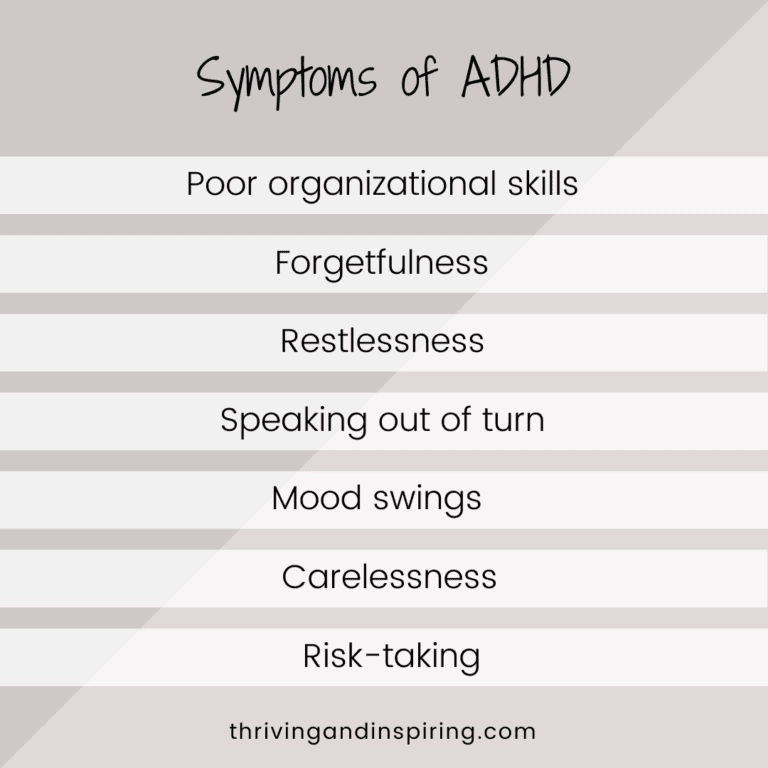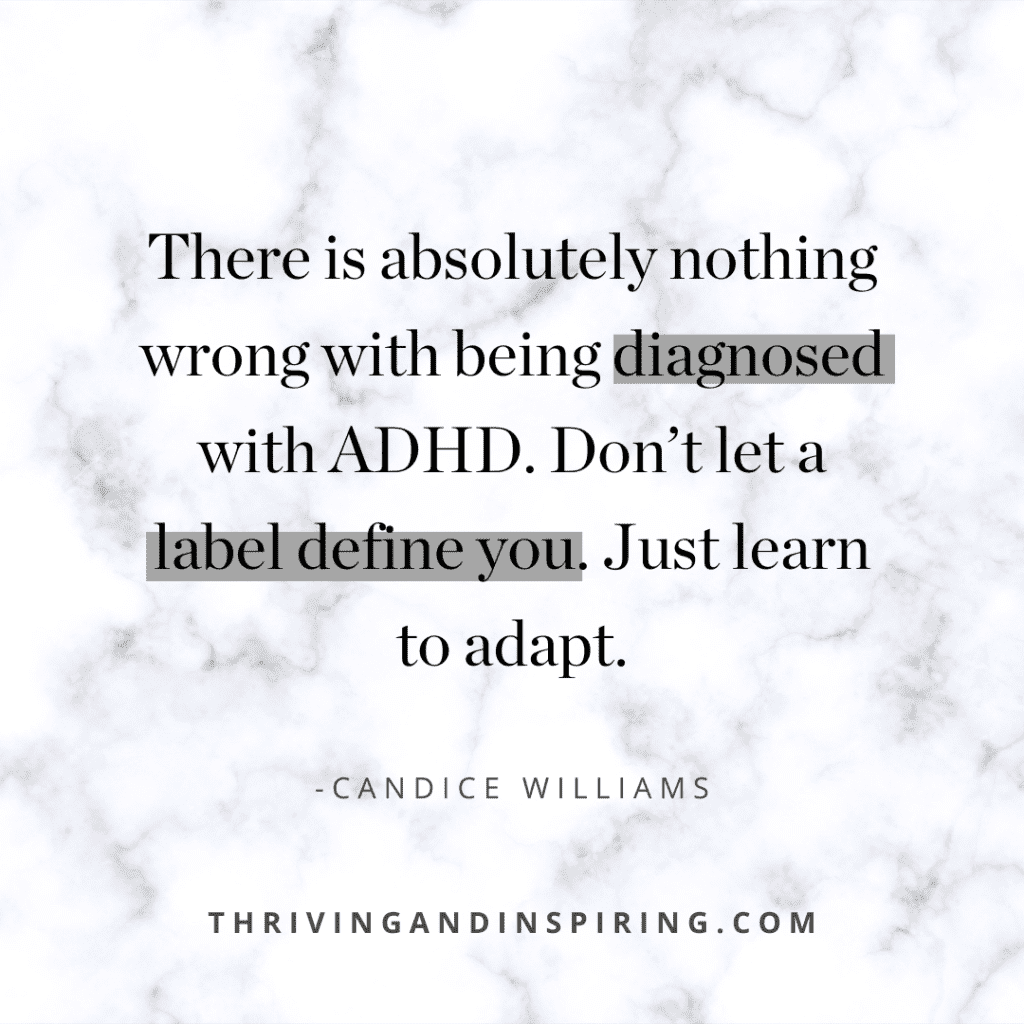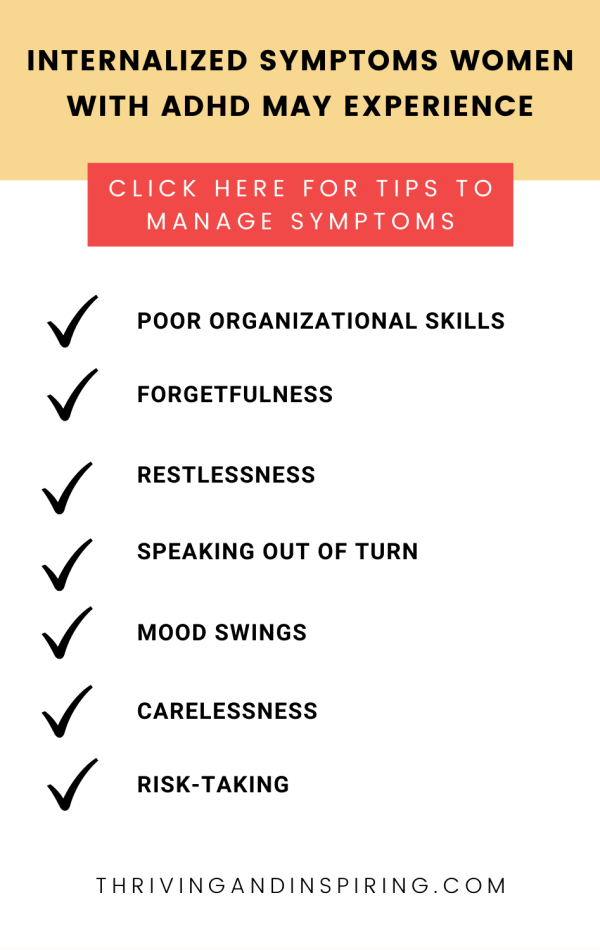I’m so happy to be bringing you a blog post about ADHD. I’m doing that by partnering with my blogging friend, Candy!
She’s the owner and writer for the blog Confidant Candy. She’s a talented writer and creative thinker! I’m leaving you in good hands, so without further adieu… Here she is!
Hi. My name is Candice, and I am a mental health advocate. I also work in the mental health field. I write about personal development on @confidantcandy as I am on a quest to become the best version of me possible! I talk about relationships, self-care and I discuss the experiences that have led me down this path. I hope you enjoy my blog.
This post may contain affiliate links which means I’ll receive a commission if you purchase through my links, at no extra cost to you. Please read full disclosure for more information.
What is ADHD?
ADHD represents attention deficit hyperactivity disorder, which impacts people’s behaviour. It is one of the most common neurodevelopment disorders and is usually diagnosed in childhood; however, many women are diagnosed with ADHD much later in life.
Studies show that women and girls are less likely to be diagnosed as some people may be unsure of what to look for (symptom-wise) when identifying if a young lady has ADHD.
But first, let us look at the symptoms of ADHD.
Symptoms of ADHD
Poor organizational skills, forgetfulness, restlessness, speaking out of turn, mood swings, carelessness, risk-taking, impatient.
The symptoms of ADHD can be broken into two categories: hyperactivity and inattentiveness.
Inattentiveness includes difficulty concentrating, being forgetful whereas hyperactivity includes struggling to sit still and constantly fidgeting.
(Note from Skye: Try this ADHD planner to keep you on target and organized.)

Differences in symptoms between women and men
It has been identified that boys show external symptoms of ADHD.
Let me break this down. When working as a special educational needs teaching assistant, I supported a young boy who had ADHD. His behaviour impacted the other children in the class. He pushed other children, ran off often and struggled to sit still for periods of time. It was exhausting supporting him, and some teachers didn’t know how to manage his behaviour: me included!
More training and research need to be done and implemented in schools when it comes to catering to children who have learning disabilities as well as neurological disorders.
On the other hand, girls internalize their symptoms.
When I was in school, although I struggled to concentrate for periods, I tried hard to make sure it didn’t impact my grades, and it didn’t. Plus, my mum got me a tutor, and I was in ‘Saturday school’ at a young age. I didn’t ‘act up’ in class, but I struggled emotionally (as I was internalizing symptoms, perhaps?).
I began experiencing symptoms of anxiety and depression, which is common with ADHD: comorbidity is shared with other neurodevelopmental disorders. And this all leads back to my last point; internalized symptoms are hard to identify, understand and possibly diagnose.
(Note from Skye: consider getting an adult fidget toy to promote focus and clarity.)

Although the symptoms are internalized, symptoms in girls are as follows:
Low self-esteem, daydreaming, appearing withdrawn and becoming anxious.
I am still learning about my ADHD and how to manage it. I am becoming more aware of the symptoms I present.
I struggle to concentrate- when I am at work, I have to take several breaks to give my mind a rest, as overstimulation impacts my ability to focus.
Forgetfulness– I have to make to-do lists at home and work or I will forget about the tasks I need to do. On top of that, I have to set reminders on my phone for important things such as hospital appointments.
Irritability– When I am at home, I am easily irritated. My pet peeve is inconsiderate people. I find it incredibly irritating. I would be in a good mood, but I am irritated if someone doesn’t clean up after themselves.
Sensitivity– I am sensitive to noise, and I didn’t realize how sensitive I am until the pandemic. Being stuck at home makes you look at things and analyse situations more often as you have more time on your hands. I had to get earplugs to help me sleep throughout the night! As I am a light sleeper, a small sound would wake me up.
Diagnosis– I was diagnosed in November of 2021 at age 26. I was like, oh ok, it makes sense. Then I researched adult women and ADHD, and I came across an article titled, “Hundreds of thousands more women tested for ADHD last year”. Isn’t that crazy? Perhaps the pandemic made people slow down and become more self-aware; that’s what it did for me.

Moving Forward
There is absolutely nothing wrong with being diagnosed with ADHD. Don’t let a label define you. Just learn to adapt, and that is what I am doing.
I started to:
-Read more about how ADHD has impacted the lives of many women
-Identify different types of coping mechanisms
-Read about different treatment methods
Recently, I started looking at medication; the different types, side effects and studies supporting and disapproving other medicines. I am learning to give myself more grace as now I know that my brain is wired more different, and that’s cool. It is treatable, and I will continue not to let it define me, another quirky personality trait.
Keep up with Candy here!
Candy’s Blog
Candy’s Instagram
Sources
https://www.ncbi.nlm.nih.gov/pmc/articles/PMC4195638/
https://www.healthline.com/health/adhd/adhd-symptoms-in-girls-and-boys
https://www.independent.co.uk/news/uk/home-news/adhd-women-gender-differences-b1993364.html
Share this post with someone who could benefit from it!
And follow me on Pinterest for encouraging graphics!
